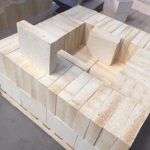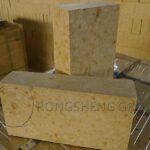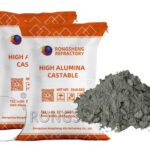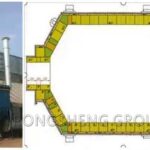Andalusite refractory bricks are suitable for use as refractory bricks for hot blast stove ceramic burners. By introducing andalusite and silicon micro powder of different grades and contents to improve its chemical mineral composition and improve the purity of raw materials. More importantly, the softening temperature under load, thermal shock resistance, and high temperature creep performance of the product are improved. Andalusite brick aggregates are all made of andalusite raw materials, which have high softening temperature under load and excellent thermal shock resistance performance, which significantly improves the service life of ceramic burner refractory bricks for blast furnace hot blast stoves. It enables the production to run for a long time, produces huge economic benefits, and is conducive to energy saving, consumption reduction, and pollution reduction. The application of andalusite refractory bricks in high-temperature kilns includes applications in hot blast furnaces, CDQ coke ovens, anode roasting furnaces, and ladle linings. Contact us for free sample bricks and quotation information of furnace bricks for sale.

Application of Andalusite Refractory Bricks in Hot Air Stove
According to the actual use effect, the refractory material for high air temperature and long life type hot blast stove should have excellent creep resistance, thermal shock resistance, resistance to CO and alkali vapor corrosion, and other comprehensive properties. It is recommended to use pure andalusite as raw material.
The grid brick load in the middle of the regenerator of the hot blast stove is relatively high, usually larger than 9 m, and the large blast furnace can reach more than 15m. Andalusite bricks or low-creep high-alumina bricks with andalusite should be selected.
The ceramic burner of the hot blast stove is prone to cracking and peeling due to large and frequent temperature fluctuations during use. It is a weak link that affects the longevity of the hot blast stove, and andalusite-based refractory materials should be used.
The refractory lining of the hot air duct is easy to be damaged by thermal stress, especially the hot air outlet, the junction of the pipeline connection, the elbow, and the air supply branch pipe. At present, it is mainly made of andalusite bricks, and some people also use low creep castables containing andalusite to replace fired furnace bricks.
Application of Andalusite Refractory Bricks in CDQ Coke Oven
Compared with wet quenching, dry coke quenching (CDQ) is beneficial to blast furnace ironmaking operation and reduces the coke ratio. The researchers carried out optimization experiments based on the characteristics of SiC bricks and mullite-andalusite bricks used in the cooling section of CDQ ovens and developed refractory materials for cooling sections with high wear resistance. The ingredient composition (w) of the new wear-resistant brick is 3~1mm andalusite 10%~35%, 5~1mm mullite 30%~60%, ≤0.088mm andalusite powder 0~20%, ≤0.088mm mullite powder 15%~30%. The industrial test results show that when the new wear-resistant brick is used, the heat exchange rate and wear resistance effect after the furnace is opened are better than those of the previously used mullite brick.
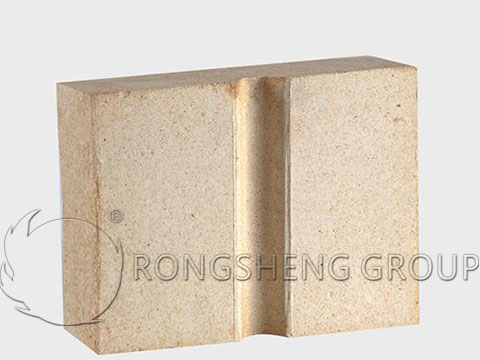
Application of Andalusite Refractory Bricks in Anode Baking Furnace
In the electrolytic aluminum industry in Europe, andalusite-based clay bricks are mainly used for the firewall of carbon anode roasters, and the reason is closely related to the alkali resistance of the matrix. The application of andalusite fines reduces the liquid phase generation of sodium vapor (from the recovery anode) during the erosion process. Furnace Bricks for Sale. Because the liquid phase is confined in a continuous mullite network, it is difficult for sodium to penetrate directly, avoiding the destruction of the microcrystalline mullite structure. This is not the case for clay, the needle-like mullite is surrounded by the liquid phase, and the sodium element can penetrate directly into the liquid phase. This is also the reason why the clay matrix has poor corrosion resistance to sodium vapor.
Andalusite Refractories for Steel Ladle Lining Material
The researchers used andalusite-alumina-SiC bricks instead of Al2O3-SiC-C bricks and built them in the slag line, shoulders, tank mouths, and other parts of the tank lining of large-scale mixed-iron trucks in steelmaking plants. The slag corrosion resistance and molten iron erosion resistance of the ladle lining are significantly improved. Judging from the actual application results of 5 tankers (cycles) in more than 1 year, the sticky slag is small and easy to remove, and the actual service life is increased by more than 30%. In order to adapt to the low-silicon iron-making process, the researchers introduced fine aggregate and fine powder andalusite into the working lining material at the bottom of the molten iron tank. Using its irreversible expansion effect at high temperatures can improve the thermal shock resistance and integrity of the tank bottom brick. Furnace Bricks for Sale. The industrial test results show that the lifespan is increased by 33.98%.
Some people have simulated the operating environment of the secondary refining ladle in the laboratory and compared the slag resistance of white corundum, andalusite, tabular corundum, bauxite, and clay. Andalusite brick has the best permeability resistance under the condition of temperature cycle change (1200~1600℃) and corrosion slag (Al-killed steel) cycle renewal.
In order to solve the problem of cracking the tundish lining during use, the researchers developed a bauxite-andalusite low-cement self-flowing castable and carried out an industrial test on a 75t tundish in a steel mill, with remarkable results. Studies have also shown that the introduction of andalusite improves the spalling resistance of low-alumina-silica castables during high-temperature use, which is beneficial to improving the service life of the castables.
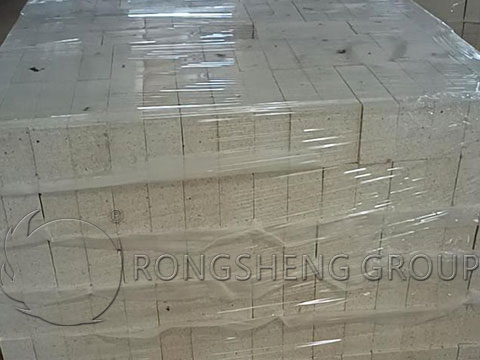
Application of Andalusite Refractory Bricks in Other High-Temperature Kilns
At present, andalusite is also often used in desulfurization lances, linings of aluminum melting furnaces and holding furnaces, and cement kilns. And preheater, ceramic kiln furniture, lead and zinc smelting closed blast furnace lining, bauxite-based spray paint for blast furnace gunning, liquid slagging gasifier lining, COREX lining, etc. Contact us to get more furnace bricks for sale.

